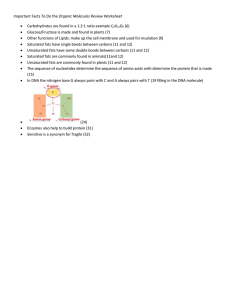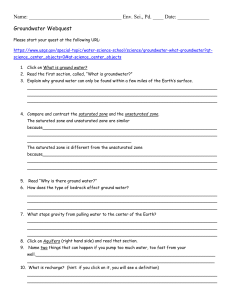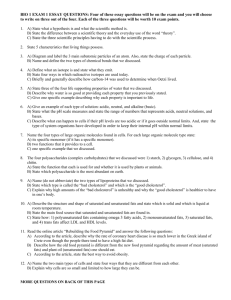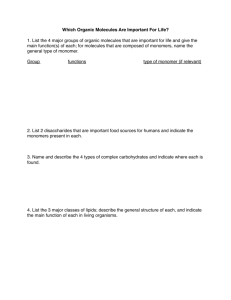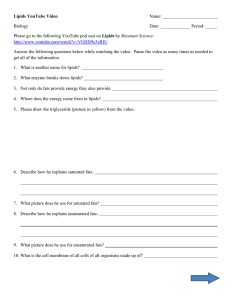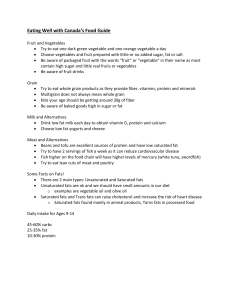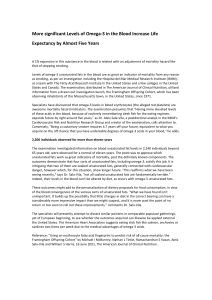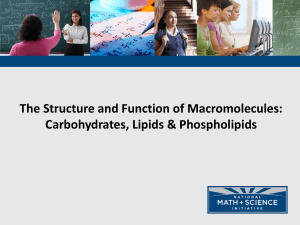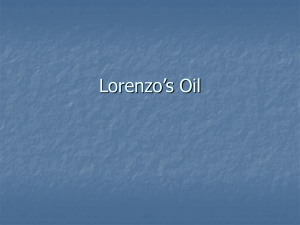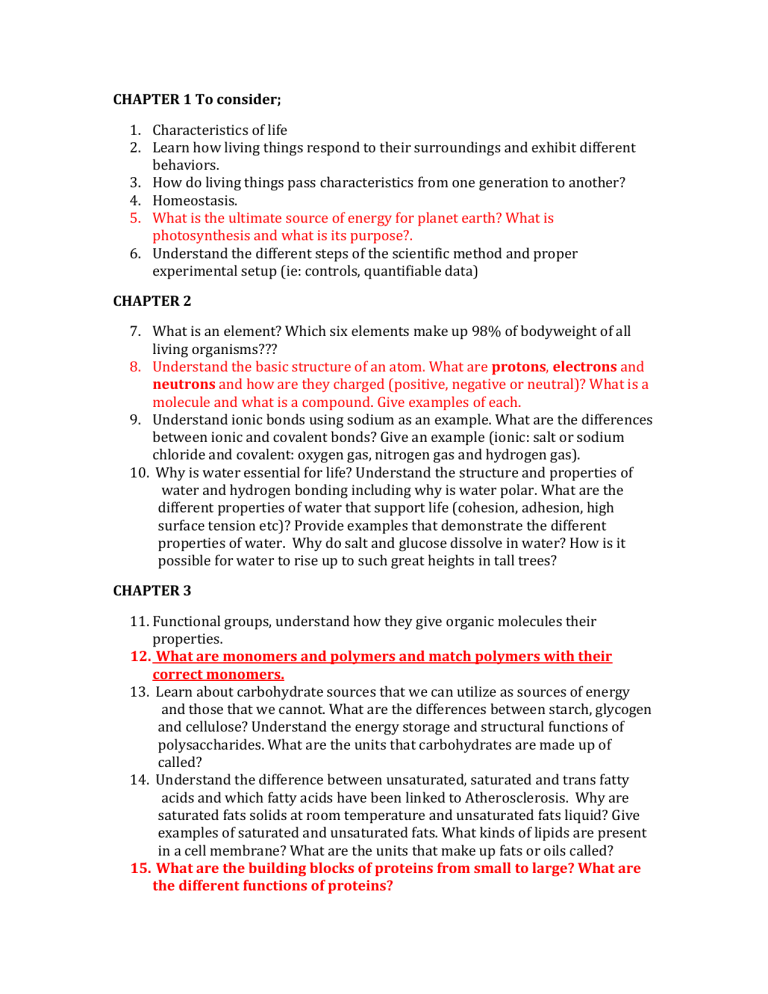
CHAPTER 1 To consider; 1. Characteristics of life 2. Learn how living things respond to their surroundings and exhibit different behaviors. 3. How do living things pass characteristics from one generation to another? 4. Homeostasis. 5. What is the ultimate source of energy for planet earth? What is photosynthesis and what is its purpose?. 6. Understand the different steps of the scientific method and proper experimental setup (ie: controls, quantifiable data) CHAPTER 2 7. What is an element? Which six elements make up 98% of bodyweight of all living organisms??? 8. Understand the basic structure of an atom. What are protons, electrons and neutrons and how are they charged (positive, negative or neutral)? What is a molecule and what is a compound. Give examples of each. 9. Understand ionic bonds using sodium as an example. What are the differences between ionic and covalent bonds? Give an example (ionic: salt or sodium chloride and covalent: oxygen gas, nitrogen gas and hydrogen gas). 10. Why is water essential for life? Understand the structure and properties of water and hydrogen bonding including why is water polar. What are the different properties of water that support life (cohesion, adhesion, high surface tension etc)? Provide examples that demonstrate the different properties of water. Why do salt and glucose dissolve in water? How is it possible for water to rise up to such great heights in tall trees? CHAPTER 3 11. Functional groups, understand how they give organic molecules their properties. 12. What are monomers and polymers and match polymers with their correct monomers. 13. Learn about carbohydrate sources that we can utilize as sources of energy and those that we cannot. What are the differences between starch, glycogen and cellulose? Understand the energy storage and structural functions of polysaccharides. What are the units that carbohydrates are made up of called? 14. Understand the difference between unsaturated, saturated and trans fatty acids and which fatty acids have been linked to Atherosclerosis. Why are saturated fats solids at room temperature and unsaturated fats liquid? Give examples of saturated and unsaturated fats. What kinds of lipids are present in a cell membrane? What are the units that make up fats or oils called? 15. What are the building blocks of proteins from small to large? What are the different functions of proteins? 16. Understand that proteins have multiple levels of structure and what are they called? 17. Know the three basic parts of DNA and RNA. What is complementary base pairing? How is DNA similar to RNA and how is it different? 18. Have functional understanding of the different roles/functions of the four major Biological Molecules 19. Know the two chemical reactions we discussed in class, dehydration synth. and hydrolysis. Labs: 1. Understand good experimental design 2. Different between qualifiable data vs quantifiable data. 3. Why might experimental reproducibility be important? 4. How can you handle a microscope safely? What can happen if you use coarse focus on anything but the scanning objective. 5. Why is it imperative to have both positive and negative controls? Possible extra credit: What are actual, real-world reasons and benefits to scientist investigating the natural world? If I ask I question like this I will want actual examples we have discussed in class, NOT answers like: “because they are curious”, or “because it’s fun to learn” I am looking for actual contributions and/or breakthroughs for humanity that occur from observing living organisms and/or gaining intricate understanding from the structure/function of molecules, cells, etc.
